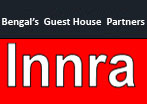|
Kolkata, having been gripped by the British politics and culture for centuries and having also been a seat and hub of Indian culture and art and religion, is a mammoth sized entity of a city that influenced the rest of the country towards political, educational, religious, artistic and general lifestyle reforms which is evident in its history and visible in its vibrant culture and myriad traditions.
Kolkata is a City of Palaces - owing to the numerous palatial mansions dotting the Kolkata cityscape – most constructed during the British colonial era in Bengal when Kolkata was made the Capital of British India. Their architecture is influenced by and emanates a mix of Neo-classical, neo-Gothic, Baroque, Islamic, Oriental and predominantly European (British, French and Portuguese) schools of design. Apart from the colossal and opulent constructions, Kolkata is home to some structural and technological marvels such as the world’s busiest and the 6th longest suspension type balanced Cantilever Bridge – the Howrah Bridge India’s longest Cable-stayed bridge – the Vidyasagar Setu; a multispan steel bridge – Vivekananda Setu and the Nivedita Setu – another cable-stayed bridge – all on one single river – Hooghly which spines through the city of Kolkata. Nothing short of being glorified, the Howrah Bridge was made the symbol of Kolkata.
Kolkata is also home to or has been a stepping stone for Nobel Prize winning Exponents such as Gurudev Rabindranath Tagore (Literature, 1913); Sir Ronald Ross (Medicine, 1902); C. V. Raman (Physics, 1930); Mother Teresa ( Peace, 1979); Amartya Sen (Economics, 1998); the ‘Oscar for Lifetime achievement’ awardee – Satyajit Ray and multi-time Grammy Winner – Pandit Ravi Shankar. Apart from these, there are scrolls of world- renowned and generations of statesmen, freedom fighters, social reformers, poets, scientists, historians, writers, orators, philosophers, linguists, sportsmen, fine artists, theatre artistes, film artistes, musicians, dancers, photographers, magicians, film makers and businessmen.
Call it a passion or obsession or maybe they are just wired that way but the gregarious Bengalis are all about boisterous and deep conversations, soul-stirring music, writing at the drop of a hat and food – both experimenting and eating. Visit the Coffee House at College Street in Kolkata and you can see what I mean. You will be amazed by the ‘Adda’ culture (having long-drawn and hearty conversations over hot cuppa tea) that’s in your face when you enter the Coffee House. Food is central to the Bengalis because of which the popular Bengali saying – ‘machhey bhate bangali’ (meaning fish and rice make a Bengali) has come into existence. One may not know a Bengali or not know where their sweets come from but the sweets made by the Bengalis are relished by domestic and foreign sweet-toothies all over.
Places of interest: Victoria Memorial • Dakhineshwar Kali, Kalighat Temple • Missionaries of Charity • Banks of the river (Hooghly) Ganges • River Cruise • Indian Museum • St. Paul’s Cathedrae• The Last Supper (original painting) • Zoological Gardens • Botanical Gardens • Town Hall • Kumartuli • Marble Palace • Water World • Heritage Buildings • Night Clubs • Sir. Stuart’s Hog’s (New) Market • Tram Ride • Horse Drawn Carriage • Durga Puja festival (held once every year) • invitation to a Bengali marriage ceremony & more…
At a short distance: Krishnanagar (Clay models) • Santiniketan ( all about Rabindranath Tagore & Kantha embroidery) • Bolpur (Baul Singers) • Mayapur (ISKCON - Hare Krishna Temple) • Navadwip • Bakreswar (9 Hot Springs) • Tarapeeth (Goddess Tara Ma) • Murshidabad ( Palaces of the erstwhile Nawabs of Bengal) • Chadernagore • Serampore (remains of French bastions) • Fulia(Handloom Weavers) & more…
Must try cuisine: Highly recommended authentic Bengali in Fish – Crab – Prawn – Lamb curries & Vegetable preparations & Rice, Rosogolla, Mishti Doi & Sondesh. See Local Cuisine. Also all other Indian regional & International speciality cuisines like Chinese / Continental / Oriental / Lebanese / Thai / Japanese / European are there to pick from. You ask, we present!

|
![]() Español
Español![]()
![]() Français
Français![]()
![]() Deutsch
Deutsch![]()
![]() Italiano
Italiano![]()
![]() Portugues
Portugues![]()
![]() Russian
Russian![]()
![]() Japanese
Japanese![]()
![]() Korean
Korean![]()
![]() Chinese
Chinese
![]()
![]() Sweden
Sweden ![]() Hungary
Hungary ![]() Arab
Arab